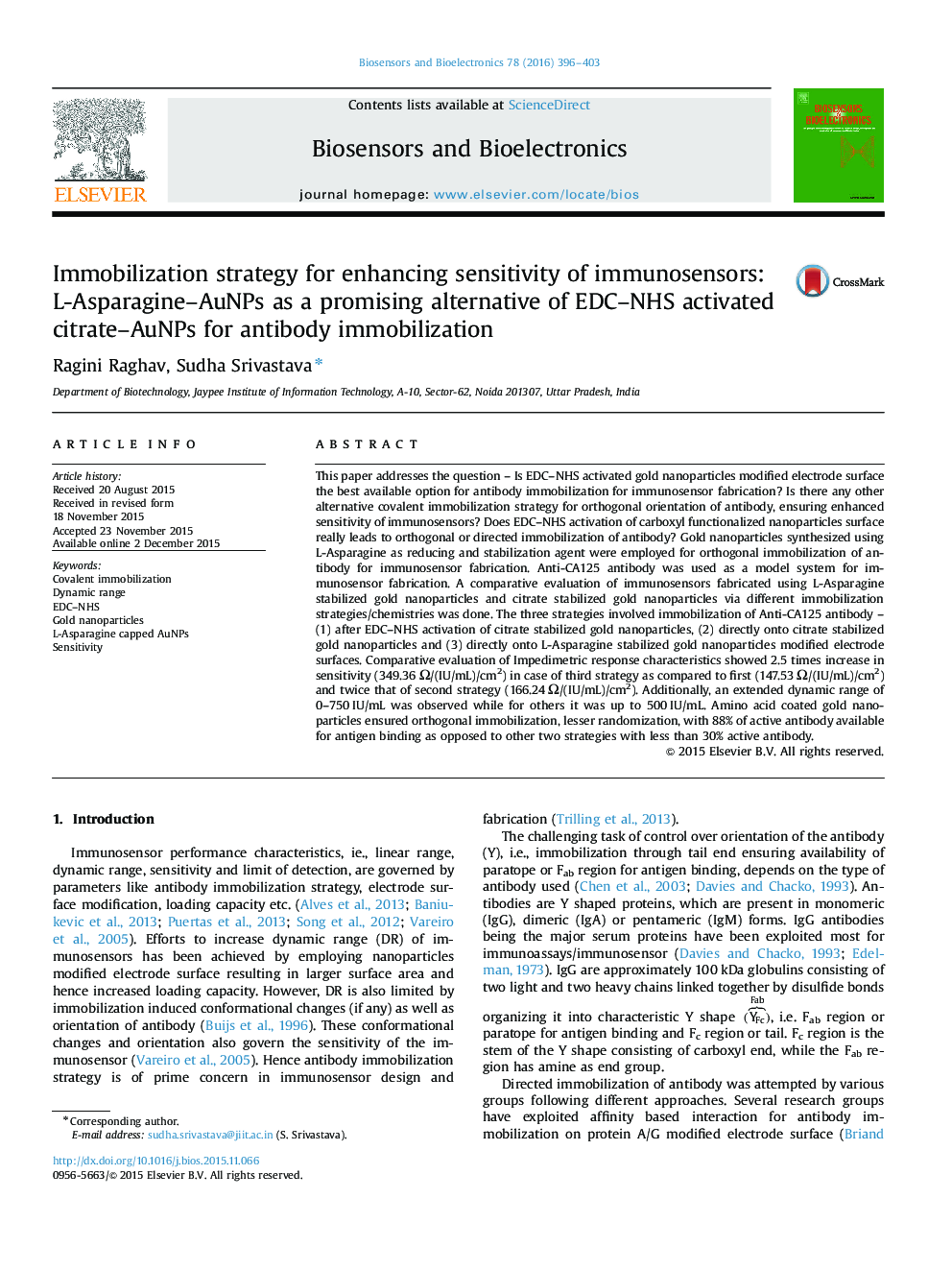| Article ID | Journal | Published Year | Pages | File Type |
|---|---|---|---|---|
| 7231041 | Biosensors and Bioelectronics | 2016 | 8 Pages |
Abstract
This paper addresses the question - Is EDC-NHS activated gold nanoparticles modified electrode surface the best available option for antibody immobilization for immunosensor fabrication? Is there any other alternative covalent immobilization strategy for orthogonal orientation of antibody, ensuring enhanced sensitivity of immunosensors? Does EDC-NHS activation of carboxyl functionalized nanoparticles surface really leads to orthogonal or directed immobilization of antibody? Gold nanoparticles synthesized using L-Asparagine as reducing and stabilization agent were employed for orthogonal immobilization of antibody for immunosensor fabrication. Anti-CA125 antibody was used as a model system for immunosensor fabrication. A comparative evaluation of immunosensors fabricated using L-Asparagine stabilized gold nanoparticles and citrate stabilized gold nanoparticles via different immobilization strategies/chemistries was done. The three strategies involved immobilization of Anti-CA125 antibody - (1) after EDC-NHS activation of citrate stabilized gold nanoparticles, (2) directly onto citrate stabilized gold nanoparticles and (3) directly onto L-Asparagine stabilized gold nanoparticles modified electrode surfaces. Comparative evaluation of Impedimetric response characteristics showed 2.5 times increase in sensitivity (349.36 Ω/(IU/mL)/cm2) in case of third strategy as compared to first (147.53 Ω/(IU/mL)/cm2) and twice that of second strategy (166.24 Ω/(IU/mL)/cm2). Additionally, an extended dynamic range of 0-750 IU/mL was observed while for others it was up to 500 IU/mL. Amino acid coated gold nanoparticles ensured orthogonal immobilization, lesser randomization, with 88% of active antibody available for antigen binding as opposed to other two strategies with less than 30% active antibody.
Related Topics
Physical Sciences and Engineering
Chemistry
Analytical Chemistry
Authors
Ragini Raghav, Sudha Srivastava,
